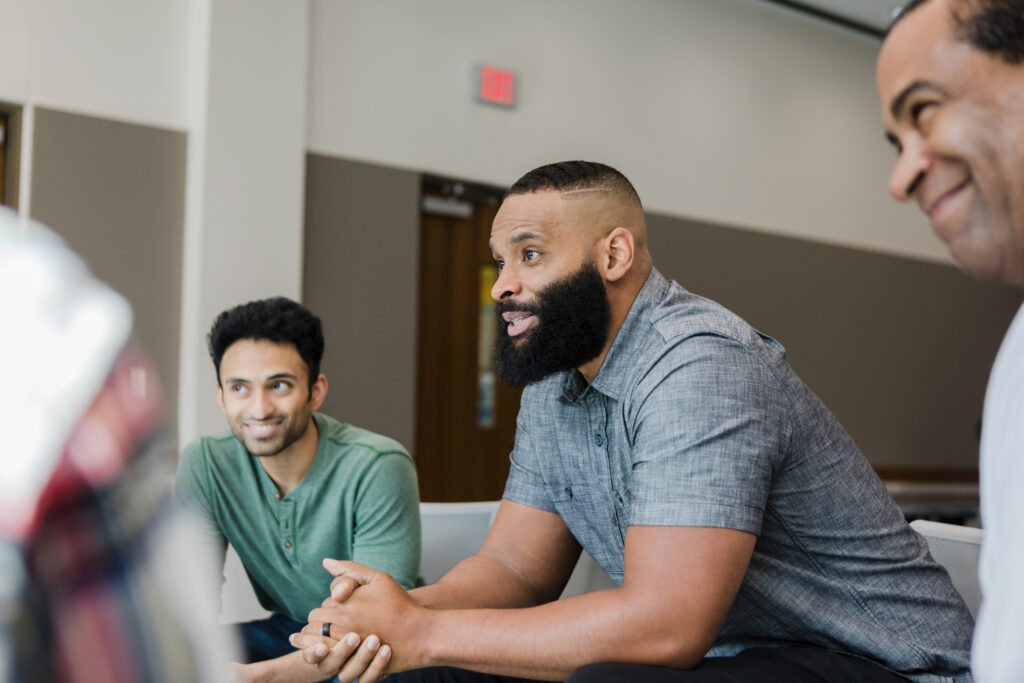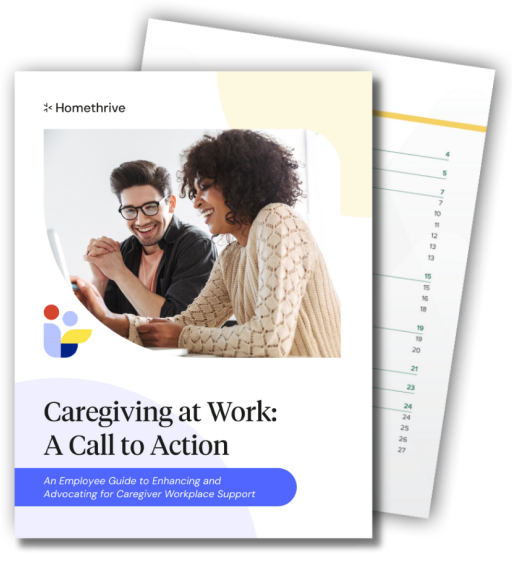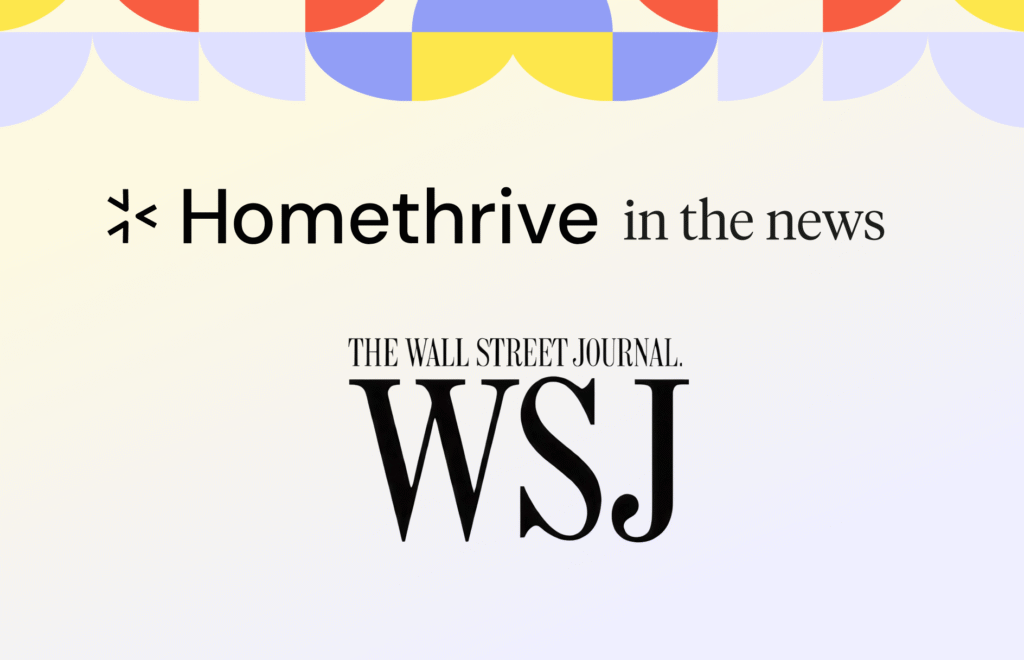For decades, Employee Assistance Programs (EAPs) have been the go-to corporate benefit, providing employees with a trusted resource when they are in crisis. For many individuals, an EAP provides access to counseling, short-term stress support, or referrals to outside providers.
For many years, this model made sense. It was a safety net that companies could offer to support their employees’ mental health. Unfortunately, the modern workplace looks very different today. The demands on employees have increased, and the lines between work and personal life are increasingly blurred.
Understanding the Caregiving Impact on Employees
Caregiving is one of the most significant forces driving this shift. Millions of employees are caring for children, aging parents, partners with chronic conditions, or family members with neurodivergence. These responsibilities weigh heavily on mental, physical, and financial health.
When caregiving is part of an employee’s daily life, an EAP alone cannot provide the level of support they need. The scope is too limited, utilization is too low, and follow-through is too shallow.
Mental health has become a central challenge, and issues like stigma or even subtle forms of mental health discrimination at work still prevent many employees from seeking help when they need it most.
At Homethrive, we see this reality every day as we work with organizations to expand their support beyond what EAPs can offer. Caregiving benefits complement EAPs, activate other underutilized resources, and provide employees with the tools they need to manage both work and life with confidence.
What EAPs Are Designed to Do
Before we jump into the common limitations of an EAP, let’s take a look at what they do well. An EAP program typically provides:
- Short-Term Counseling Sessions: Employees can access a limited number of therapy or coaching sessions at no cost.
- Crisis Intervention: If an employee is experiencing acute stress, grief, or substance use issues, the EAP is a first line of response.
- Offering Referrals: EAP staff can direct employees to outside providers for long-term or specialized care.
- Generalized resources: Many EAPs offer online portals featuring articles, toolkits, and hotlines that cover topics such as financial wellness and stress management.
It’s essential to recognize that these services are invaluable in times of crisis. For HR leaders, EAPs have long been a relatively low-cost way to provide employee mental health benefits and connect staff to trained professionals.
However, the challenges of an EAP often begin with employee utilization. Across most industries, EAP utilization rates typically range between 3% and 6%. That means the majority of employees never use the benefit, even when they’re struggling. Low awareness, clunky access, stigma, and limited session caps all contribute to this problem.
For employers, the lack of transparency in usage exacerbates the issue. Many EAP providers report little data back to HR teams. They may report how many people called the hotline or accessed an online resource, but they rarely provide insights into outcomes or trends in engagement. This “black box” leaves HR leaders unsure if their investment is actually making an impact.
Why Caregiving Benefits Are Central to Employee Well-Being
The Overlap Between Caregiving and Mental Health
Caregiving responsibilities can negatively impact mental health as this role often strips away valuable time that individuals rely on to stay balanced and centered. Exercise, hobbies, rest, and relationships are deprioritized as caregiving demands increase. Stress levels rise as employees juggle work deadlines with last-minute school calls, medical appointments, or emergencies at home. Fatigue builds when caregiving tasks disrupt sleep at night.
Over time, this strain leads to anxiety, depression, and burnout. Studies consistently show that caregivers are more likely to experience poor mental health than non-caregivers. The link is so strong that it is irresponsible to separate caregiving support from mental health support. This is why conversations about discussing mental health at work are just as critical as providing the resources themselves.
The Caregiving Impact on Work
Caregiving pressures do not stay at home. They show up at work through missed days, distractions, and lower productivity. Some employees quietly scale back their ambitions or decline promotions because they know their caregiving responsibilities will make it impossible for them to take on more. Others exit the workforce entirely, leaving employers with turnover costs and talent gaps.
In many cases, employees need more than crisis support. They may require flexibility for doctor’s appointments, time away to manage urgent family needs, or the reassurance that taking mental health days at work is not only allowed but encouraged. Without these cultural signals, even the strongest benefits will go underused.
Why EAPs Often Miss the Mark
For most EAPs, employers can’t ignore the notable gaps in coverage. While EAPs are beneficial to general populations, they often overlook the mental health impact of the caregiving role.
Most plans include a few short counseling sessions that cannot untangle the practical challenges of arranging child care, navigating elder care, or managing long-term conditions. For caregiving employees, needs often include specific, ongoing, and tailored guidance. The support is custom to their family situation. Without these services, the mental health strain continues, and the employee never gets to the root of their stress.
How Caregiving Benefits Differ from Traditional EAPs
For many organizations, caregiving benefits are the missing piece in their employee support strategy. While EAPs are reactive and crisis-driven, caregiving benefits are proactive and comprehensive in nature. These benefits help guide employees throughout their caregiving journey, from the earliest days of a diagnosis, to critical times of stress, to after a loss has occurred. They are also available whenever a member needs them, with digital and in-person solutions to help at any time of day, with any request or question.
Here’s how the two benefits vary in practice:
Scope of Support
The average EAP focuses almost exclusively on the employee. Most support is capped at a few sessions. The issues covered are typically extensive but shallow in offering.
Alternatively, caregiving benefits extend to the employee’s family. Most caregiving benefits will cover child care planning, elder care navigation, neurodivergence support, chronic condition management, and even guidance after the loss of a loved one.
Caregiving benefits are not limited to the employee alone. These benefits also acknowledge that family responsibilities have a significant impact on employee well-being, both at home and on the job.
Depth of Expertise
EAPs often employ general counseling providers and referral services. These individuals assist employees by listening, empathizing, and recommending outside support. Unfortunately, these services will rarely offer specialized caregiving knowledge.
Caregiving benefits offer experienced and expert guidance to overwhelmed staff members seeking specialized caregiving support. Homethrive, for instance, connects caregiving employees with Care Guides.
Care Guides are knowledgeable individuals who understand the complexities of long-term care, health systems, special education, and family dynamics.
Experience and Accessibility
Many employees find EAPs frustrating to access. Intake forms, call centers, and outdated portals can discourage use, especially when caregivers are struggling with stress or burnout. Even when employees do connect, the process often ends with a referral rather than a solution. Caregiving benefits replace that with easy access, user-friendly technology, and direct one-on-one guidance. Employees are matched with a Care Guide who not only listens but also coordinates services, follows up, and takes action. The result is a smoother, more human experience.
Utilization Rates
The difference in utilization is dramatic. EAPs average 3 to 6 percent usage. Homethrive routinely achieves 25 percent or higher. When employees see that the benefit is easy to use, relevant to their lives, and designed with their families in mind, they are far more likely to engage.
Employer Insights
For HR leaders, caregiving benefits also provide transparency. Instead of receiving minimal data, employers see transparent reporting on usage, engagement trends, and outcomes. This reporting enables the measurement of ROI, the adjustment of strategies, and the demonstration of the benefit’s impact directly to leadership or management.
Integration with Other Benefits
Perhaps the most overlooked difference is how caregiving benefits integrate with the rest of the benefits ecosystem. EAPs often operate in isolation, siloed from other offerings. Caregiving benefits act as connectors. A Care Guide might help an employee secure child care and then recommend that they use the EAP for stress counseling. Or they may direct an employee toward financial wellness programs after helping them navigate a chronic condition. In this way, caregiving benefits actually activate EAPs and other underused resources.
What Employers Gain by Adding Caregiving Benefits
Higher Utilization of All Benefits
When caregiving benefits are in place, employees engage more not only with the caregiving platform but also with EAPs and other resources. The Care Guide serves as a navigator, making it easier for employees to find and utilize the resources the company already provides. This navigation raises overall ROI on the entire benefits package.
Reduced Absenteeism and Presenteeism
Employees who receive caregiving support take fewer unplanned absences. They also show up more fully at work, reducing presenteeism. For employers, this means steadier productivity and fewer disruptions.
Lower Turnover
One of the top reasons employees leave their jobs is the inability to balance work and caregiving responsibilities. By providing caregiving benefits, employers send a clear signal that they understand and support this reality. With comprehensive benefits like these, employees are more likely to remain with the company, which ultimately reduces the high costs associated with turnover.
Data-Driven Insights
One significant impact of the Homethrive caregiving benefit is access to transparent reporting. Transparent reporting enables HR leaders to have direct access to the most frequently utilized areas, allowing for the identification of where employees are struggling the most. This helps refine benefit strategies and ensures targeted investments where they will have the most impact.
Improved Workplace Culture
Offering caregiving benefits strengthens workplace culture. It shows employees they are valued as people outside of their formal roles and positions. This connection helps build trust, loyalty, and engagement. In a competitive talent market, these cultural advantages help employers attract and retain top performers.
Why Caregiving Benefits Strengthen EAPs
It is important to note that caregiving benefits do not replace EAPs. Instead, they work side by side to strengthen EAPs.
By addressing the day-to-day realities of caregiving, these benefits reduce the stress that often drives employees to seek counseling. When counseling is needed, caregiving benefits encourage employees to use the EAP as part of a broader support plan. The two programs complement each other, creating a more complete safety net for those within the workplace who need them most.
For employers, this integration means increased visibility, improved outcomes, and enhanced value from the entire benefits package.
By supporting mental health, companies offer a genuine approach to employee well-being. Improved well-being provides more than just health; it enhances the company’s overall dynamic. In fact, studies have shown that six benefits of mental health support that matter most include:
- lower absenteeism
- reduced turnover
- higher engagement
- stronger workplace culture
- better productivity
- healthier employees overall
Conclusion
EAPs have played a crucial role in promoting workplace well-being for decades. They remain valuable tools for crisis support and short-term counseling. But on their own, they are no longer enough.
Today’s workforce is shaped by caregiving. Employees are balancing jobs with responsibilities for children, aging parents, and loved ones with complex needs. These responsibilities have a direct impact on both mental and physical health, as well as workplace performance. Without caregiving benefits, employees are left to navigate these roles on their own — and employers suffer the consequences in terms of turnover, absenteeism, and disengagement.
Homethrive provides the specialized, ongoing, and family-centered support that EAPs cannot offer. Caregiving benefits help employers move beyond the limitations of a traditional EAP and create a benefits ecosystem that truly supports their people. The result is higher utilization, measurable ROI, and a stronger, more resilient workforce. Caregiving benefits are the missing link — and Homethrive is here to deliver them.
By partnering with Homethrive, you can help employees reclaim valuable time and energy to focus on their work, families, and personal well-being.
Show your team they don’t have to choose between their careers and caregiving responsibilities. Contact us today to explore how Homethrive can enhance your employees’ well-being and productivity.







